#Local Wildlife Sites
Text





– via infernocomplex
[ID: five photos of Indian Flying Foxes all shown from upside down and staring at the viewer. They have a black snout that reaches all the way up and circles its eyes. The top of their head and body is chestnut brown and they have big, round dark eyes. END ID]
#LOOK HOW CUTE !!!!#i love you inaturalist its literally one of my favorite sites in existence#how lucky i am to live in a time where strangers from around the world can share their local wildlife <3#ransom's nature posting
10 notes
·
View notes
Text
top 10 reasons to visit Lake Turkana
Wondering about the top 10 best Reasons to visit Lake Turkana? Lake Turkana, also known as the “Jade Sea,” is a truly unique and breathtaking destination. Located in northern Kenya, this massive saltwater lake is home to a diverse array of flora and fauna, making it a must-visit destination for any nature lover. From its stunning landscapes to its rich cultural history, there are so many reasons…

View On WordPress
#Central Island National Park wildlife#Cultural history of Lake Turkana#Ethiopia#Fossil sites in Kenya#Hot air balloon ride over Lake Turkana#Jade Sea vacation#Kenya#Kenya nature tourism#Koobi Fora Museum paleontology#Lake Turkana cultural groups#Lake Turkana travel#Local delicacies of Lake Turkana#Northern Frontier District national parks#Outdoor activities at Lake Turkana#Relaxation at Lake Turkana#Trade route history of Lake Turkana#Wildlife safari in Northern Frontier District
2 notes
·
View notes
Text

Check out the list of 10 incredible things to do in Meghalaya, A place where ancient customs and stunning landscapes coexist in harmony.
#Things to do in meghalaya#colonial heritage sites#Trekking and Hiking#Camping in Meghalaya#Water Sports#Caving#Museum Visits#Wildlife Spotting#Savour Local Cuisine#Shopping Spree#Waterfalls Exploration
1 note
·
View note
Text
I don't think any of my follows are Florida residents, but just in case:
DeSantis's admin is currently (Aug 13, 2024) pushing to add pickleball courts, golf courses, and huge glamping lodges to some of Florida's state parks. The parks in question are nature and wildlife sites, and as anyone in Florida could tell you, we are not hurting for golf courses.
So! If this passes you off like it does me, you can fill out a survey about the proposal here: https://survey.alchemer.com/s3/7983173/Great-Outdoors-Initiative
There's also going to be local hearings in the counties of the affected parks, but they're rescheduling them because so many people are mad and intend to show up, so I cannot give dates or locations at this time.
This article has some details and shouldn't be paywalled: https://www.wfla.com/news/florida/floridians-balk-at-desantis-administration-plan-to-build-golf-courses-at-state-parks
785 notes
·
View notes
Text
"In China, a landscape architect is reimagining cities across the vast country by working with nature to combat flooding through the ‘sponge city’ concept.
Through his architecture firm Turenscape, Yu has created hundreds of projects in dozens of cities using native plants, dirt, and clever planning to absorb excess rainwater and channel it away from densely populated areas.
Flooding, especially in the two Chinese heartlands of the commercial south and the agricultural north, is becoming increasingly common, but Yu says that concrete and pipe solutions can only go so far. They’re inflexible, expensive, and require constant maintenance. According to a 2021 World Bank report, 641 of China’s 654 largest cities face regular flooding.
“There’s a misconception that if we can build a flood wall higher and higher, or if we build the dams higher and stronger, we can protect a city from flooding,” Yu told CNN in a video call. “(We think) we can control the water… that is a mistake.”
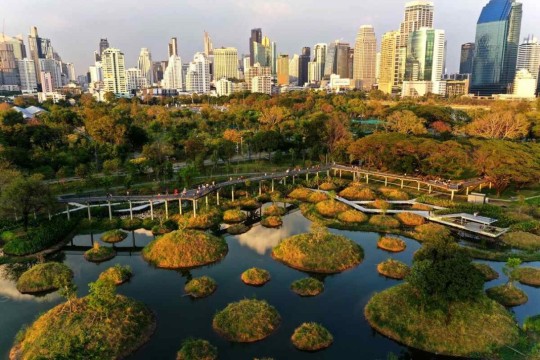
Pictured: The Benjakitti Forest Park in Bangkok
Yu has been called the “Chinese Olmstead” referring to Frederick Law Olmstead, the designer of NYC’s Central Park. He grew up in a little farming village of 500 people in Zhejiang Province, where 36 weirs channel the waters of a creek across terraced rice paddies.
Once a year, carp would migrate upstream and Yu always looked forward to seeing them leap over the weirs.
This synthesis of man and nature is something that Turenscape projects encapsulate. These include The Nanchang Fish Tail Park, in China’s Jiangxi province, Red Ribbon Park in Qinghuandao, Hebei province, the Sanya Mangrove Park in China’s island province of Hainan, and almost a thousand others. In all cases, Yu utilizes native plants that don’t need any care to develop extremely spongey ground that absorbs excess rainfall.
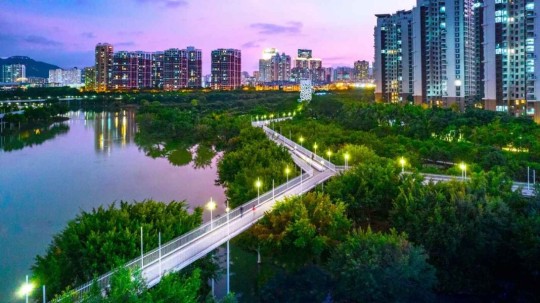
Pictured: The Dong’an Wetland Park, another Turescape project in Sanya.
He often builds sponge projects on top of polluted or abandoned areas, giving his work an aspect of reclamation. The Nanchang Fish Tail Park for example was built across a 124-acre polluted former fish farm and coal ash dump site. Small islands with dawn redwoods and two types of cypress attract local wildlife to the metropolis of 6 million people.
Sanya Mangrove Park was built over an old concrete sea wall, a barren fish farm, and a nearby brownfield site to create a ‘living’ sea wall.
One hectare (2.47 acres) of Turenscape sponge land can naturally clean 800 tons of polluted water to the point that it is safe enough to swim in, and as a result, many of the sponge projects have become extremely popular with locals.
One of the reasons Yu likes these ideas over grand infrastructure projects is that they are flexible and can be deployed as needed to specific areas, creating a web of rain sponges. If a large drainage, dam, seawall, or canal is built in the wrong place, it represents a huge waste of time and money.
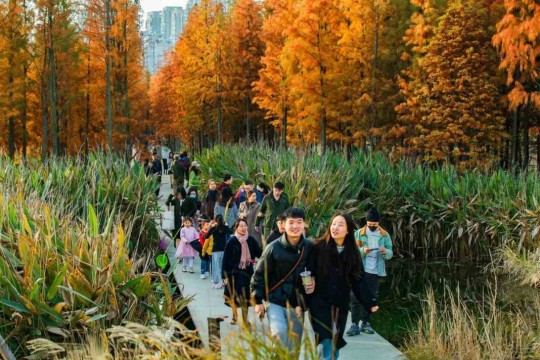
Pictured: A walkway leads visitors through the Nanchang Fish Tail Park.
The sponge city projects in Wuhan created by Turenscape and others cost in total around half a billion dollars less than proposed concrete ideas. Now there are over 300 sponge projects in Wuhan, including urban gardens, parks, and green spaces, all of which divert water into artificial lakes and ponds or capture it in soil which is then released more slowly into the sewer system.
Last year, The Cultural Landscape Foundation awarded Yu the $100,000 Oberlander Prize for elevating the role of design in the process of creating nature-based solutions for the public’s enjoyment and benefit."
-via Good News Network, August 15, 2024
#china#wuhan#thailand#bangkok#landscape#wetlands#sponge city#landscape architecture#flooding#climate action#parks#public park#green architecture#sustainability#good news#hope
678 notes
·
View notes
Text

⠀⠀⠀𝐃𝐈𝐅𝐅𝐄𝐑𝐄𝐍𝐓 𝐎𝐔𝐓𝐈𝐍𝐆𝐒 & 𝐓𝐑𝐈𝐏𝐒 𝐓𝐎 𝐔𝐒𝐄 𝐈𝐍 𝐑𝐏. ♡
under the cut you'll find a list of 56 diverse outings and trips to use in starters or replies withing plots. this can be used to bring new cenarious to plots, starters and rps, helping to differ threads and put characters in new experiences.
Walking in nature
A bicycle ride
Visit to an art museum
Historical city tour
Boat trip on the river/lake
Mountain trail hike
Visit to a botanical garden
Picnic in the park
Bird watching
Gastronomic tour of the city
Hot air balloon ride
Cave exploration
Visit to a zoo or aquarium
Shopping itinerary in local stores
Winery tour
Panoramic train ride
Visit to historical sites
Trip to a neighboring city
Kayak/canoe trip
Tour of movie locations
Drive-in cinea
Walk on a beach
Visit local fairs and markets
Photo expedition
Horseback riding
Visit to an astronomical observatory
Urban art trail tour
Excursion to a theme park
Traditional cooking class
Helicopter ride
Camping trip
Visit to a cultural festival
Tour of haunted places
Surf lesson or other water sport
Motorcycle ride
Exploring historical ruins
Regional dance class
Treasure hunt tour
Tour of panoramic viewpoints
Rollerblading or skateboarding
Day at an amusement park
Visit to a nature reserve
Quad bike ride
Participation in a local marathon
Wildlife watching
Zip line ride
Tour of architectural monuments
Participation in a spiritual retreat
Sailing boat trip
Motorcycle ride
Visit to a contemporary art exhibition
#rph#rp resources#rp writing help#character help#rp help#plot help#plot development#rpc#writing advice#writingtips#writing tips
362 notes
·
View notes
Text
Solar farms don’t just have to be about low carbon electricity, they could also help reverse biodiversity decline. Under appropriate management and the right policies, solar farms have the potential to deliver benefits for nature and climate.
Our team’s research on solar farms across the UK shows that these energy facilities can boost local pollinator populations and enhance pollination services to adjacent crops. For instance, managing solar farms as wildflower meadows can benefit bumblebee foraging and nesting, while larger solar farms can increase pollinator densities in surrounding landscapes compared to smaller sites managed as turf grass.
Solar farms have been found to boost the diversity and abundance of certain plants, invertebrates and birds, compared to that on farmland, if solar panels are integrated with vegetation, even in urban areas.
Solar farms can also deliver multiple “ecosystem services” in addition to biodiversity conservation, including food production and support for rural activities such as recreation.
Yet, as with any changes, there will be winners and losers. Some species, such as bats, find it harder to forage for insects and travel along protected corridors of habitat due to to the presence of solar farms. The jury is still out on whether solar farms change the soil’s capacity to store carbon. With clearer understanding of how different species respond to the presence of solar farms, the design, location and management of these facilities can be adapted accordingly to benefit nature.
Solar farms may challenge some deeply held perceptions in the UK of a cultural “green” countryside dotted with lush farmlands in which wildlife co-exist in apparent harmony with human-dominated land uses.
However, centuries of agricultural intensification have pushed several species and habitats to the brink in the UK, a nation that’s been highlighted as one of the most nature-depleted countries in the world.
12 August 2024
127 notes
·
View notes
Note
Hello! I’ve been interested in park ranger work for awhile— but since researching the institution a little deeper, I’m worried that park rangers are essentially forest cops. I noticed on one of your posts that you mentioned that you were a a park ranger law enforcement officer— and I was wondering if you could go into a little detail about park ranger work and it’s connection to law enforcement? Another reason I feel weird about pursuing park ranger work is I feel that national parks have a non-ignorable history of stripping land from indigenous people. If you have any thoughts or experiences related to the career— it would be extremely helpful for me to hear since I am trying to sort out what I would like to do after college. Thank you for reading. If you don’t want to answer this question either, I completely understand.
There's no singular institution. There are rangers who work for the National Park Service, for State governments, for local governments, or for cities and towns. And there are many different types of rangers: enforcement, interpretive, wilderness rescue, the list goes on. Different sites have different needs, and different positions will have different duties. Many rangers have zero law enforcement authority, and most I've spoken to prefer it that way: they prefer to focus on education and conservation.
I was an enforcement ranger, but never a law enforcement officer--the primary authority I had was the ability to issue fairly cheap citations for animal-related violations (fishing, poaching, off-leash dogs, harm to wildlife, etc.) through local Animal Control. Though some rangers elsewhere carry weapons and receive law enforcement training, my department never did (the latter, frankly, was often to our detriment).
Certainly the NPS has a history loaded with racism, land theft, land desecration, even genocide. The very inception of the NPS was predicated on the myth that the lands to be designated as National Parks were uninhabited wilderness. But don't assume the problem lies solely with NPS: any institution with even a small amount of power has the potential to abuse it, and smaller parks are no exception. I've never even worked for the NPS (my state doesn't even have any national parks), but local agencies often have histories of segregating parks or enforcing segregation within them.
I've heard people say that park rangers are the "only good" law enforcement, and that's a generalization I absolutely wouldn't make. Yes, there are laws and regulations that are necessary for the sake of conservation and our ability to safely access natural areas. That doesn't mean those laws are always universally fair or fairly enforced.
If this leaves you feeling dismayed, well, yeah. Me, too. But there are also quite a lot of positions within parks that are not rangers at all, and quite a lot of jobs within conservation and nature education that are not parks jobs. I've found both park maintenance and trail crew to be just as rewarding in many ways, and if you can live with the low salary they typically offer, I do recommend giving those positions a try. The salary was ultimately a dealbreaker for me.
I haven't been a ranger for several years. I left because the agency I was working for was undeniably a toxic work environment. This isn't intended to put you off working for parks: it's a valuable, rewarding career to educate the public about the natural world and to help maintain wild spaces. I'm grateful to still be involved with parks in other ways. But even the small agency I'm currently working for struggles to right itself. It can be rough out there.
I've already discussed a few of the above points before in my #park ranger tag, so I encourage interested folks to read there if they're interested in more of the mundane, day-to-day stuff.
100 notes
·
View notes
Text
Cosmic Travelogue: Las Vegas
Incoming transmission…
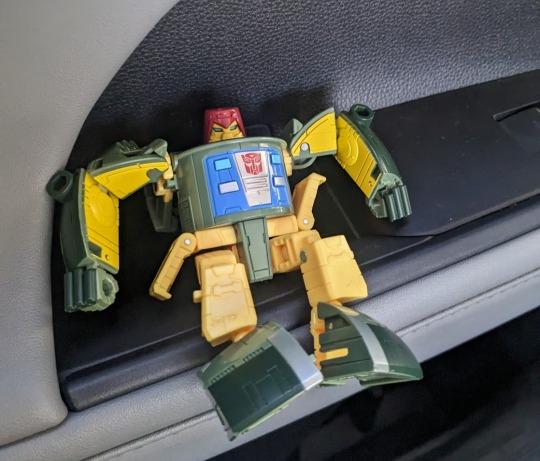
“...ello? Hello hello? TELETRAAN 1, are you receiving?... OH! Wonderful! This is Cosmos, reporting in from Las Vegas, Nevada! I had to make an emergency landing in the desert after an ambush from the Seekers. Thankfully a fellow traveler salvaged me from my crash site, allowing me to tag along on their adventures across the city. Our first major stop? The Valley of Fire State Park!”
“It was amazing how quickly the bustling city gave way to arid desert and jagged cliffs. As our vehicle crawled further into the canyon it felt like we were about to be swallowed by the mountains. The park offered many rolling plains…”
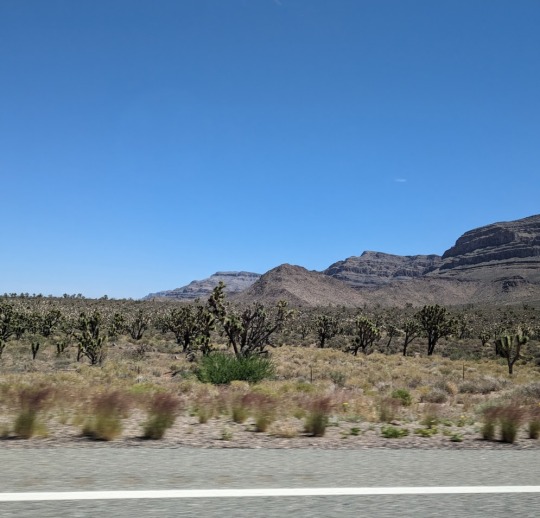
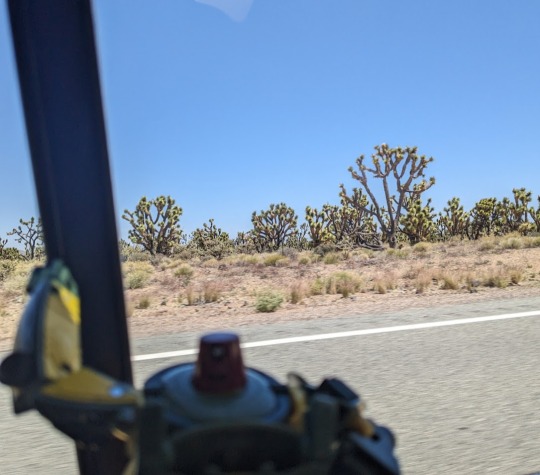
“Yawning canyons…”

“And local wildlife! This kind creature even left me a parting gift!”



“Our next location was an important hub of human power generation (maybe Wheeljack could take a few notes?) The Hoover Dam, built in 1931. Can you believe the humans built that giant thing? Though my travel companion wouldn't stop making jokes about 'degenerates like you belonging on a cross...' Perhaps I need to do some research when I return to base.”

“We weren’t done with national conservation yet, as our next trip took us to the stunning Red Rock Canyon Driving Tour! Just look at those beautiful (and aptly named!) mountains.~”

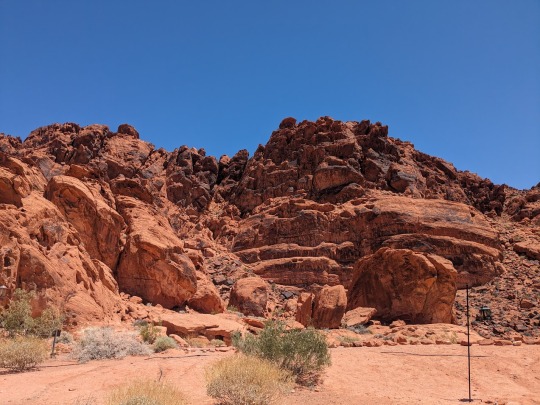
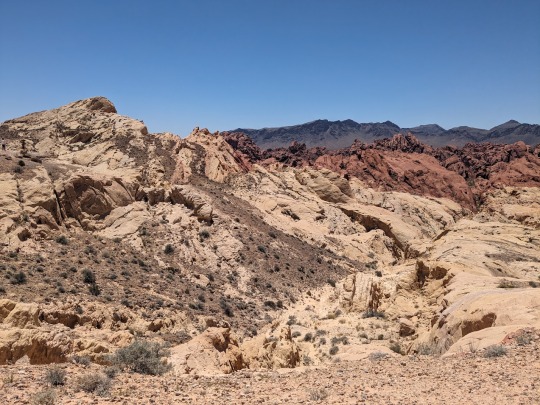
“There were plenty of other fascinating places we visited as well. For example, this repository of organic ocean life…”


“A museum of dated human entertainment…”



“And, uh, this thing! And that thing!”

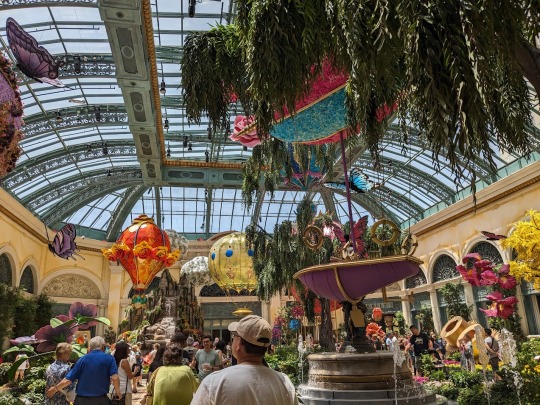
“Not to mention the food! I didn’t really partake, but they certainly seemed to enjoy it.”



“My kindly rescuers even went to far as to offer me a ride back to their home! One I graciously accepted as my main thrusters are still malfunctioning… But I will return to base soon with a full report of my travels! Cosmos, over and out!”


116 notes
·
View notes
Text
This whole backlash against printing fics irks the fuck out of me, and I got some shit to say about it. Mostly "Fuck You" but here's some nuance:
On the surface, I understand where the naysayers are coming from. It's a legitimate fear that making a profit from fanworks will bring down the C&D Hammer on fandom. I get that. Do not put on the One Ring, or you'll risk the Eye of Sauron.
But here's the thing. Fuck capitalism. Fuck digital only. We're living in the digital dark ages, and 100 years from now huge swathes of our history, fact and fiction, will be lost to our descendants because there will be no physical copies of our lives for them to find in old libraries and boxes in the attic, etc.
Creators deserve physical copies of their creations, and so do the other people in the world who love them.
I don't want to profit from letting people print my fics. That's why I use Lulu, since they have an option to set zero profit and make the links hidden so only fans in the know can get a copy. Other printing sites I've looked at in the past don't have those options. In fact, the first time I ever even thought about printing one of my stories was when I won NaNo for the first time and one of the prizes was a coupon for 3 free printings of your story. HELL YEAH, that's a copy for me, a copy for my beta, and a copy for the artist who made the cover for me. Perfect! But I ended up not using that coupon, because the site required I set a profit margin, and did not have an option to make it private. Ummm, no thanks. Not worth the risk. And even though the profit margin could be set as low as ten cents, I did not want to make ANY money from my fic, because I know that would be breaking Fair Use rules. I found Lulu instead, and decided to let other people get copies too, because I'm nice. And if I don't, it's not like I can stop them from doing it themselves, no matter how much I'd rather they not do that.
But that's not good enough for the Reporting Trolls. Their argument is that it's not possible for it to be completely profit free, since Lulu makes a profit on the printing costs and the shipping carriers make a profit off the shipping costs. Someone is making a profit, and that's unacceptable, even if that someone is not Me, The Person Who Made The Printing and Shipping Worth Paying For.
I would like anyone who thinks that to delete your accounts where you read fanfiction. AO3, Wattpad, FFNet, LJ, Dreamwidth, hell even Tumblr for the short ficlet stuff that only gets posted here. Because even if the website it self isn't profiting, (AO3 for example), the companies that sold them their server hardware made a profit. Since utilities are privatized, the electric company that runs those servers are making a profit. IF YOU PRINT IT ON YOUR PRINTER AND PUT IT IN A 3 RING BINDER, the paper, printer, and ink manufacturers made a profit from your dinky little print out. The companies that build all the parts for your computer or your smartphone made a profit on your portal to the internet, who profits from your monthly subscription, just like your electric company profits from the power it takes to run your pc or charge your phone battery. IT'S A SLIPPERY FUCKING SLOPE, AND YOU NEED TO LEARN WHEN TO BACK AWAY FROM THE LEDGE.
We live in a Capitalist Hellscape, and if a company could figure out how to charge you to breathe and for every single beat of your heart, they'd fucking do it. So get off your goddamn high horses with this "wELL SoMEonE iS makINg PrOFit" bullshit. Or if you truly believe that, shut off every account you own, turn off your utilities, and go live in the woods and make up your own goddamn stories, which you can only share orally to the local wildlife. They give kudos by biting you and giving you rabies.
(not to mention; these assholes don't go after fanartists who are ABSOLUTELY making a profit off their work. but noooo, Flirty can't format a fic for print and allow other people to pay for the printing service and shipping, while never seeing a penny of that herself, despite all of the GODDAMN WORK I HAVE PUT INTO IT, WRITING IT IN THE FIRST PLACE INCLUDED FUCK YOU VERY MUCH. fuckyoufuckyoufuckyoufuckyoufucky--)
1K notes
·
View notes
Text
Excerpt from this New York Times story:
The two tracts of land at the edge of the ancient forest in Borneo were relatively small: One was just 74 acres, the other 195. They had also been heavily degraded by human activity. One site consisted of abandoned rice paddies, leaving barren spaces largely devoid of wildlife. The other was deforested grassland that caught fire every year.
But starting in 2009, people from neighboring communities were hired by a local environmental group to help restore the land. They planted native seedlings, yanked out weeds, dug firebreaks and watered the area during droughts. Aided by the region’s heat and abundant rain, the young plants, which included native hardwoods and fruit trees, grew swiftly, and soon created a canopy.
Late in 2020, cameras were set up on the replanted tracts. The land bordered Gunung Palung National Park, home to endangered orangutans, pangolins, white-bearded gibbons and macaques, and researchers wanted to see if wildlife was coming back.
Their findings were heartening. The cameras documented 47 species of mammals, birds and reptiles, 18 of them at risk for extinction, including an endangered Sunda pangolin and two endangered Bornean orangutans.
The study, recently published in the journal Tropical Natural History, shows that community involvement can play a vital role in restoring wildlife habitat and forest ecosystems, according to researchers.
“When we do community-run reforestation, things really grow back faster,” said Nina Finley, the research manager at Health in Harmony, an American nonprofit organization that conducted the study along with an affiliated organization in Indonesia, Alam Sehat Lestari, and staffers from the national park.
Earlier reforestation efforts with less community involvement resulted in young plants that were vulnerable to weeds and wildfires, Ms. Finley said. But after villagers were hired to regularly weed and water the land, the survival rate of saplings rose substantially, and is now above 70 percent.
Ms. Finley said that addressing the needs of the people living nearby first was key to the project’s success.
43 notes
·
View notes
Note
Recommendations for stargazing?
https://www.lightpollutionmap.info/ shows where skies are good, basically the darker it is the better the sky will be. you can click on the map to see the "bortle class" of a location, which is a classification system that gives a general idea of what you can see. (descriptions of each class on wikipedia https://en.wikipedia.org/wiki/Bortle_scale). In my experience, if you've never seen a dark sky, then bortle 3 & 4 locations will be fantastic looking straight above you, bortle 1 & 2 will be fantastic in all directions.
it takes time for your eyes to adapt to the dark to see as much dark detail as they can. For dark sites, I often hear people recommend at least 30 minutes without any bright screens or lights or torches to get the best experience
You wanna avoid stargazing when the moon is out (like greater than 30% phase) cuz it acts as a big light globe and defeats the purpose of dark skies. You can look at the moon from anywhere anyway. The moon cycles through its phases in an interval of about once a month. Take note of moon phase, moonrise and moonset times, and plan your stargazing around them. Stellarium (website or program or app) is helpful for seeing when the moon is out, and is generally a great map of everything in the sky.
The brightest parts of the milky way are high in the sky between june and october. But I'd say it's definitely still worth seeing both sides of the milky way at a dark site. Also the more south your latitude, the better view you get of the milky way core.
During late spring (in both hemispheres) the milky way only rises at inconvenient times, so take note of that.
You wanna check weather conditions. Getting caught in rain is miserable. Even if it's clear, smoke or raised dust or mist or high humidity can blot out the sky and make it harder to stargaze. It's not super easy to predict those conditions, often it requires observing the air on the day that you're stargazing or checking satellite imagery. but usually for mid-latitude locations, the clearest clear skies occur for the few days after a cold front, under high pressure (it still depends on local weather patterns)
Generally, locations at high elevation are better for stargazing than locations at low elevation of equivalent bortle class, because there's less atmosphere to look through so the sky will be clearer
Bring a chair or else your legs and neck will hurt like a bitch and the experience starts to become a bit painful. A chair that can lean back is ideal. Dress for the weather, then bring an extra layer just in case
A good way to find stargazing locations is by searching up local astronomy clubs and seeing where they like to go. Don't crash their events if they're invite-only though
Be aware of local wildlife. Here the only thing to worry about is snakes really, i dunno what to do in places like america where you have like killer bears and killer bobcats
111 notes
·
View notes
Text
An outstanding wildlife and community site in Essex is under serious threat from the development of up to 1,000 houses.
Locally known as ‘the Wick’, this 76ha mosaic of flowery acid grassland, sandy slopes, scrub, woodland and hedgerows is home to a rich diversity of animals.
The Wick is a key breeding area for the second-best population of Red Listed Nightingale in the UK, and a home to nesting Skylarks and Vulnerable Barbastelle Bats. It supports almost 1,500 invertebrate species, including a quarter of all the UK’s spiders and a quarter of all the butterflies and moths found in Essex.
We need your help to secure the future of this nationally important haven for wildlife- please sign our petition and help to save the Middlewick Ranges.
46 notes
·
View notes
Text
The Hanford nuclear site was established in 1943 as part of the Manhattan Project, and over the next four decades produced nearly two-thirds of the plutonium for the US’s nuclear weapons supply, including the bomb dropped on Nagasaki.
During its lifespan, hundreds of billions of gallons of liquid waste were dumped in underground storage tanks or simply straight into the ground. After the site’s nine nuclear reactors were shut down by 1987, about 56m gallons of radioactive waste were left behind in 177 large underground tanks – two of which are currently leaking – alongside a deeply scarred landscape.
In the decades since, the Yakama Nation has been one of four local Indigenous communities dedicated to the cleanup of this historic landscape. For the Yakama Nation, that has meant tireless environmental and cultural oversight, advocacy and outreach with the hope that one day the site will be restored to its natural state, opening the doors to a long-awaited, unencumbered homecoming.
Today, their outreach work has reached a fever pitch. There are few Yakama Nation elders still alive who remember the area before its transformation, and there are likely decades to go before cleanup is complete. So members are racing to pass on the site’s history to the next generation, in the hopes they can one day take over.
Yakama Nation history on the Hanford site dates back to pre-colonization, when people would spend the winter here fishing for sturgeon, salmon and lamprey in the Columbia River, as well as gathering and trading with other families. In 1855, the Nation ceded over 11m acres of land to the US, which included the Hanford area, and signed a treaty that relegated them to a reservation while allowing the right to continue fishing, hunting, and gathering roots and berries at “all usual and accustomed places”.
But in the 1940’s, the situation shifted dramatically when the area was cleared out to make room for the construction of nuclear reactors.
LaRena Sohappy, 83, vice-chairwoman for Yakama Nation General Council, whose father was a well-known medicine man, grew up in Wapato, about 40 miles from Hanford. She said she remembers the strawberry fields that lined the Hanford site, her family gathering Skolkol, a root and daily food, and traveling to the area for ceremonies.
Her cousin’s family who lived close to Hanford were woken in the middle of the night and forced to leave to make way for the nuclear site, she recalled
“They didn’t have time to pack up anything,” said Sohappy. “They just had to leave and they were never told why and how long they were going to be gone.”
The effort to give Indigenous people a voice in Hanford’s fate was forged in part by Russell Jim, a member of Yakama Nation’s council, whose work has been credited with helping to keep Hanford from becoming a permanent “deep geologic repository”, a place where high-level nuclear waste from this site and others across the country would be stored.
“From time immemorial we have known a special relationship with Mother Earth,” Jim, who died in 2018, said in a statement to the US Senate in 1980. “We have a religious and moral duty to help protect Mother Earth from acts which may be a detriment to generations of all mankind.”
Today, the ER/WM program, which was founded in the early 1980’s with Jim at the helm, includes such staff as a biologist, ecologist and archeologist. It’s funded by the US Department of Energy (DoE), which operates the Hanford site and leads the cleanup process under an agreement with the US Environmental Protection Agency (EPA) and the Washington state department of ecology.
The Yakama Nation program’s focus is on accelerating a thorough cleanup of the site, protecting culturally significant resources and assessing the threats to wildlife and water.
1K notes
·
View notes
Text
"Next Monday [6/17/24] is the start of National Pollinator Awareness Week, and one Colorado advocacy group is hosting a flower planting drive to rewild Colorado’s meadows, gardens, and just maybe, its children too.
Created by constitutional amendment in 1992, Great Outdoors Colorado (GOCO) is a state-funded independent board that invests a portion of Colorado Lottery proceeds to help preserve and enhance the state’s parks, trails, wildlife, rivers, and open spaces.
This year, GOCO’s offshoot Generation Wild is distributing over 100,000 free packets of wildflower seeds to collection points at museums, Denver Parks and Rec. offices, and libraries all over the state to encourage kids and families to plant the seeds in their backyards.
The Save the Bees! initiative aims to make the state more beautiful, more ecologically diverse, and more friendly to pollinators.
According to a new report from the Colorado Department of Natural Resources, 20% of Colorado’s bumblebees are now at risk of extinction. Even in a small area like a backyard, planting wildflowers can make a positive impact on the local ecosystem and provide native bees with a healthy place to live.
“The Western Bumblebee population has declined in Colorado by 72%, and we’re calling on kids across Colorado to ‘bee’ the change,” said GOCO Executive Director Jackie Miller.

Named after Generation Wild’s official mascot “Wilder,” the Wilderflower Seed Mix was developed in partnership with Applewood Seed Co. and packets are now available for pickup at designated partner sites including more than 80 Little Free Library boxes.
By distributing 100,000 Wilderflower packets, Generation Wild is providing more than 56 million seeds for planting in every nook and cranny of the state. All seeds are regionally-native to Colorado, which is important for sustaining the living landscape of bees, birds, and other animals.
Additionally, by using flower species adapted to the Mile High climate, landscapers and gardeners need to use less water than if they were tending non-native plants.
“Applewood Seed Co. was excited to jump in and help Generation Wild identify a seed mix that is native to the Colorado region and the American West, containing a diversity of flower species to attract and support Colorado’s pollinator populations,” stated Norm Poppe, CEO of Applewood Seed Co. “We hope efforts like this continue to educate the public on pollinator conservation and the need to protect our native bees and butterflies.”
Concluding her statement Miller firmly stated that children grow up better outside, and if you or a parent you know agree with her, all the information on how to participate in Save the Bees! can be found here on their website, including a map showing all the local pickup points for the Wilderflower Seed Packets."
-via Good News Network, June 13, 2024
#wildflowers#wild flowers#colorado#bees#native bees#entomology#insects#save the bees#pollinators#bumblebees#bumble bee#i love bees#biodiversity#native plants#urban gardening#gardening#ecology#conservation#endangered species#wildlife conservation#enviromentalism#good news#hope#hope posting#solarpunk#denver#boulder colorado#colorado springs#libraries#public libraries
474 notes
·
View notes
Text
Since its Halloween season again......
Places appropriate to have haunted ghost tours or Halloween parties:
-a historic mansion (that wasn't a slave plantation, for fuck's sake)
-your own house or a friend's house
-a forest (as long as you're not disturbing the local landscape and wildlife)
-an amusement park
-a cornfield
-an abandoned industrial warehouse
Places that are not appropriate to have haunted ghost tours or Halloween parties:
-human specimen collection museums
-historic prisons
-historic asylums
-historic slave plantations
-historic hospitals
-sites of tragedy (battlefields, mass graves, memorials to genocide and other historic atrocities)
-marginalized communities' cemeteries and burial grounds
This goes for both people participating in these events and for people hosting it. Sometimes historic sites will host these events as their only way of generating revenue because Capitalism is a plague. Don't attend these events. Want to support a historic site's management? Just donate money directly, don't attend an event profiting off the disrespect and defilement of human bodies and lives.
181 notes
·
View notes